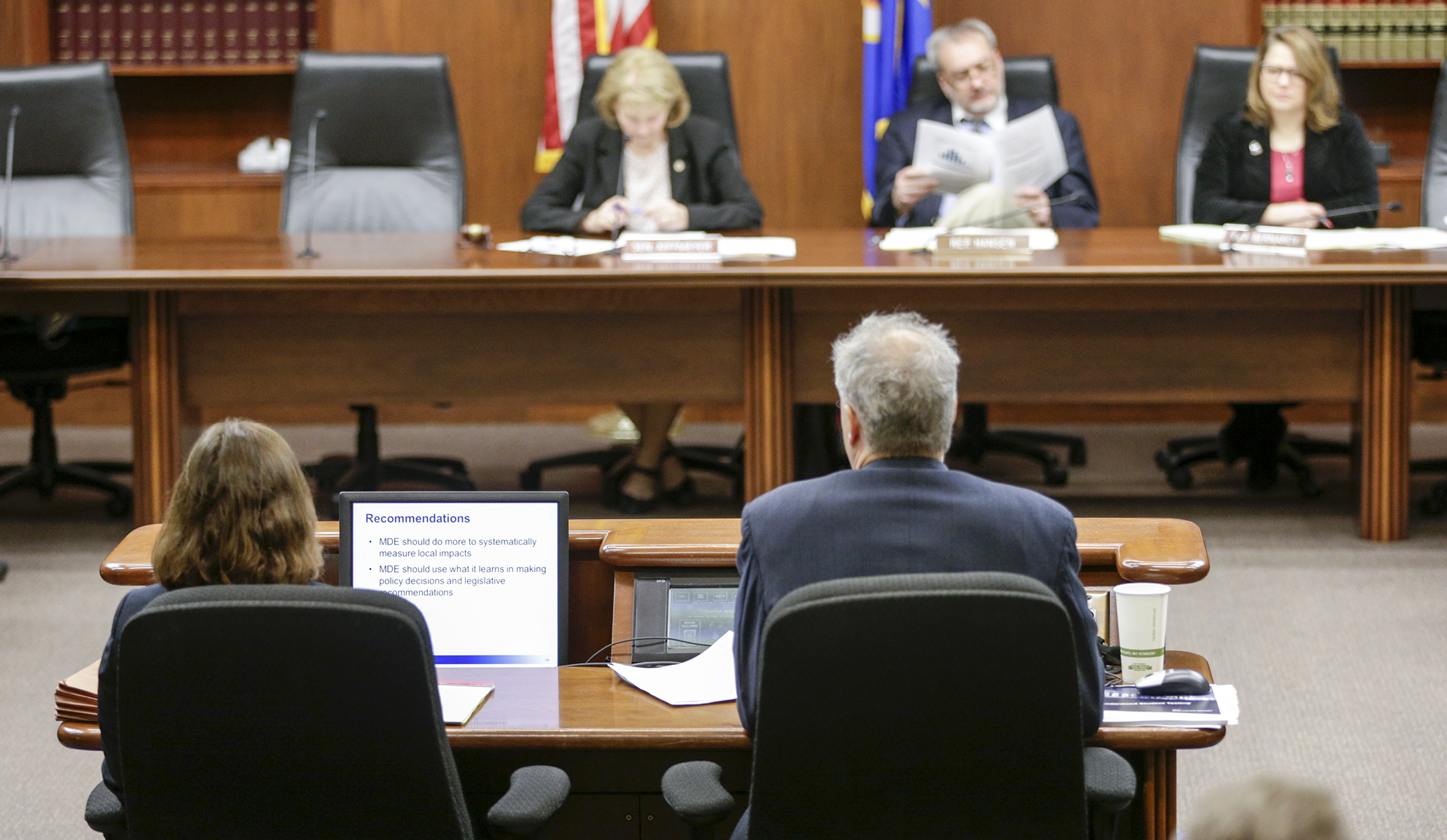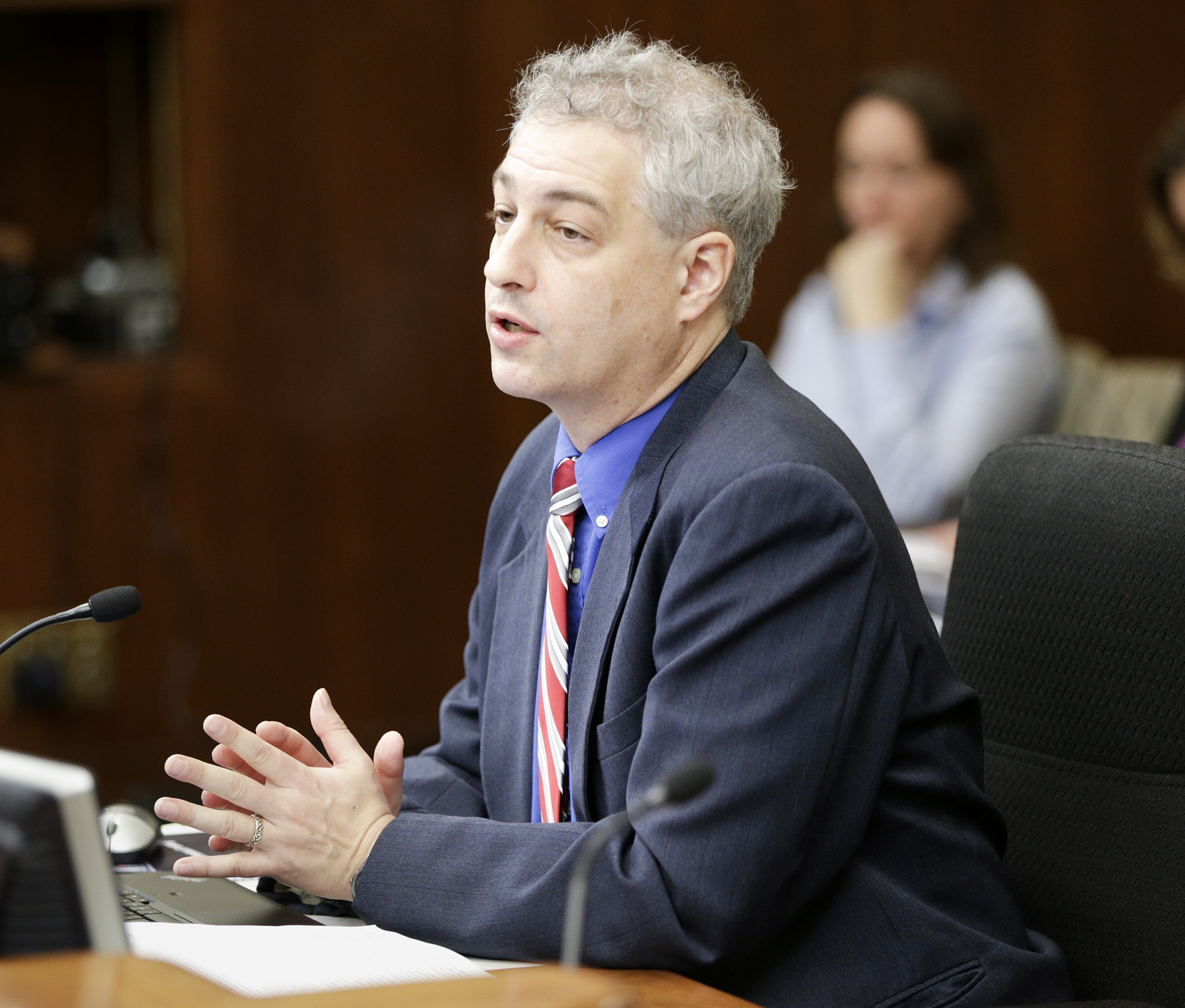Standardized testing issues, recommendations reviewed in new report

Are statewide standardized tests producing more problems than benefits?
Impacts of standardized testing and Legislative recommendations were released Monday as part of a new report by the Office of the Legislative Auditor.
The report found that standardized testing can be time-consuming, burden school resources and produce results that can be confusing. It offered several suggestions for the Department of Education to consider.
WATCH The Legislative Audit Commission receives a report on statewide standardized testing
Minnesota Comprehensive Assessments are administered to all students in grades 3-8, 10 and 11. Subjects include reading, math and science (which must be completed during one high school grade). English language learners also take the ACCESS test to gauge proficiency in reading, writing, speaking and listening.
“A concern we have is that teachers are spending time not teaching, and students are spending time testing instead of being taught,” said Sen. Mary Kiffmeyer (R-Big Lake), who chairs the Legislative Audit Commission, which received the report findings Monday.
Teaching to test?
The majority of schools reported spending between 11-15 days administering the assessments. More than 400 schools spent between 16-20 days. On average, a student takes 4.5 hours to complete three assessments.
“That’s a significant share of the school year,” Deputy Legislative Auditor Judy Randall said.
Testing also strains school staffing and equipment resources.
Nearly one in five districts reported hiring extra staff to help administer testing responsibilities.
Computer resources also become unavailable for other instruction while in use for testing: 83 percent of districts reported purchasing additional equipment as a result. It also drains internet bandwidth schoolwide.
 David Kirchner, evaluation manager for the Office of the Legislative Auditor, describes the findings and recommendations of the evaluation of standardized student testing in Minnesota at a meeting of the Legislative Audit Commission. Photo by Paul Battaglia
David Kirchner, evaluation manager for the Office of the Legislative Auditor, describes the findings and recommendations of the evaluation of standardized student testing in Minnesota at a meeting of the Legislative Audit Commission. Photo by Paul Battaglia”Many schools have limited technological resources; they have to rotate students through the computer lab to take tests,” Randall said.
“It’s clear that computers provide certain advantages, but there are certainly disadvantages as well,” said evaluation manager David Kirchner. He pointed to faster test score results as a positive.
But marring potential benefit, test results can be confusing for teachers – only 57 percent reported they felt prepared to interpret student results.
“I feel bad for teachers that haven’t been given training to understand the data,” said Rep. Sondra Erickson (R-Princeton). The retired English teacher chairs the House Innovation Policy Committee.
Locally adopted alternate tests, such as the Minnesota Test of Academic Skills, are preferred by many districts. However, tests cannot replace the MCA unless aligned with state standards.
“Is it worth it? Are the tests useful? It depends,” Randall said. “In the end, we think the state may be trying to do too much with one test.”
Recommendations
The report recommends the Department of Education develop a system to more closely monitor how testing impacts students locally, using the results to guide future policy decision with prioritized legislative recommendations.
Assistant Commissioner Kevin McHenry agreed the evaluation was fair. He said that over time testing has evolved into a barometer of multiple student factors while straying from its original purpose as a student achievement measurement.
“We look forward to working with the Legislature,” he said.
The report also recommends the department increase outreach efforts to help districts better understand testing results.
Current language provisions should also be considered for revision, with a focus on clarity and federal compatibility.
Related Articles
Search Session Daily
Advanced Search OptionsPriority Dailies
Ways and Means Committee OKs proposed $512 million supplemental budget on party-line vote
By Mike Cook Meeting more needs or fiscal irresponsibility is one way to sum up the differences among the two parties on a supplemental spending package a year after a $72 billion state budg...
Meeting more needs or fiscal irresponsibility is one way to sum up the differences among the two parties on a supplemental spending package a year after a $72 billion state budg...
Minnesota’s projected budget surplus balloons to $3.7 billion, but fiscal pressure still looms
By Rob Hubbard Just as Minnesota has experienced a warmer winter than usual, so has the state’s budget outlook warmed over the past few months.
On Thursday, Minnesota Management and Budget...
Just as Minnesota has experienced a warmer winter than usual, so has the state’s budget outlook warmed over the past few months.
On Thursday, Minnesota Management and Budget...